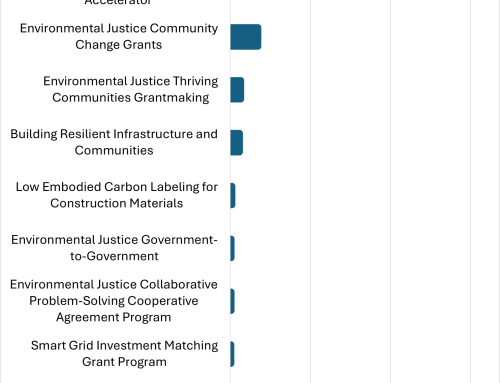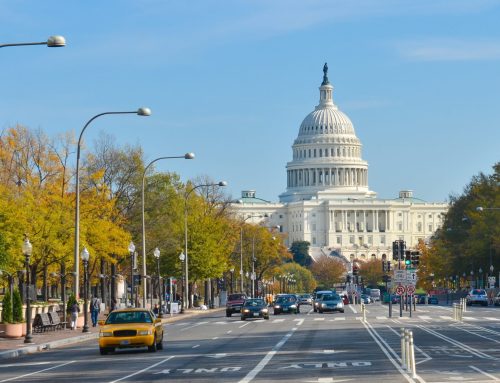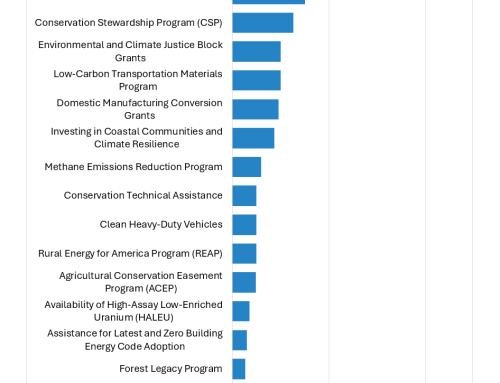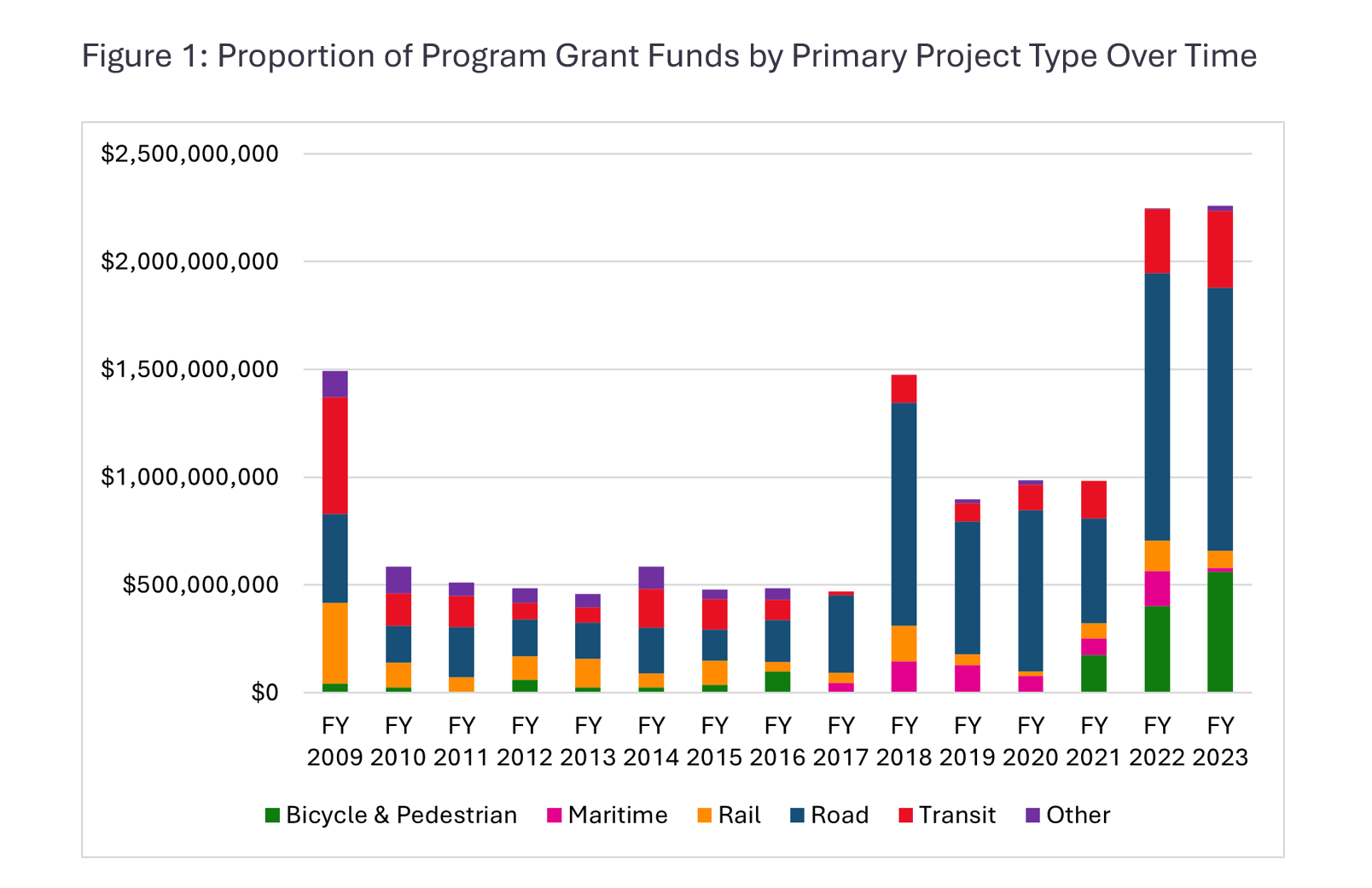
The Infrastructure Investment and Jobs Act (IIJA) provides $7.5 billion in funding over four years to the Rebuilding American Infrastructure with Sustainability and Equity (RAISE) grant program. RAISE is an existing U.S. Department of Transportation (DOT) program that funds surface transportation projects to improve safety, environmental sustainability, quality of life, mobility and community connectivity, economic competitiveness, and opportunity, including tourism, state of good repair, partnership and collaboration, and innovation. RAISE is one of the largest programs where the DOT has discretion – much of the other DOT funding from IIJA will be issued in formula funding to states – so there is a prime opportunity for RAISE to progress zero emissions transportation projects.
In August 2022, DOT announced $2.25 billion in funding awarded to 166 projects in all 50 states, Washington D.C., Puerto Rico, and the U.S. Virgin Islands – the largest single year announcement at the time. The DOT beat that record in June 2023 when it announced $2.26 billion in funding for 162 projects in all 50 states, D.C., and two territories. This year, DOT received $15 billion in requests. Here is what we learned from the funding awarded in 2023. This analysis builds on findings from the Annual Report released in May 2023.
What types of projects received funding?
Most of the funding went to roads (54 percent), though as we noted in the Annual Report, program categories do not differentiate between road expansion and road repairs. The proportion that went to roads in 2023 was very similar to the funding that went to roads in 2022.
Perhaps the most significant story of the funding this year was the record RAISE funding for bicycle and pedestrian projects. Awarded funding increased from zero in FY 2020 to $562 million in FY 2023 for 41 projects in 27 states. Six of those states received $25 million – the largest of all the awarded bicycle and pedestrian projects. This increase in bicycle and pedestrian funding marked a departure from the Trump Administration where “the proportion of Bicycle and Pedestrian projects dropped precipitously to zero and Road Funding projects as a percentage of funding rose sharply” according to our Annual Report. The Biden Administration increased the proportion to 18 percent in 2021, and now a record 24 percent in 2023. Read more details on the projects here. Meanwhile, maritime funding decreased significantly from $163 million in 2022 to just $17.4 million in 2023.
While the absolute amounts grew, transit funding as a proportion of all funding has plateaued over the last two years. The American Public Transportation Association (APTA) estimates the level of funding for transit and rail projects was steady in 2023. According to the APTA, “Transit and passenger rail projects account for more than $425 million, nearly 19 percent, of the awarded funds. In FY22, transit projects accounted for more than 18 percent of RAISE grants and in FY21, transit projects accounted for more than 19 percent.” The APTA has called on Secretary Buttigieg to direct a “significantly greater percentage” of funding to transit projects to meet historical trends.
Who received the funding?
RAISE funding for Disadvantaged Communities (DACs) increased to 54 percent per the Climate and Economic Justice Screening Tool (CEJST) (see Figure 2). CEJST tracks benefits to DACs, not funding and so it is important to avoid assuming that “a RAISE project is a benefit to a community and not a disbenefit (many argue, for instance, that a road widening is not a benefit to a community).” For instance, in 2023, the DOT awarded approximately $192 million to 11 projects that mentioned road widening, seven of which are in a DAC. Indeed, disadvantaged communities and communities of color are disproportionately impacted by highway expansions.
Although road widening is often proposed as a solution to traffic congestion, it can lead to adverse outcomes. For example, it can “encourage people to drive more” and “a few years after a highway is widened, research shows, traffic — and the greenhouse gas emissions that come along with it — often returns.” According to the Issue Brief: IIJA and The Highway Funding Conundrum, these types of projects, such as Reimagine I-10 – a $750 million corridor-widening project in El Paso, Texas funded by the National Highway Performance Program – “have raised concerns that expanding car traffic through the region will exacerbate air quality issues” in historically disadvantaged communities.
In 2023, DOT awarded $180 million to 12 Tribal groups. All that funding went to road projects though many of those projects will help communities prepare for flooding. As Tala Parker at the Natural Resources Defense Council (NRDC) noted, Tribes are often overlooked during the allocation of federal transportation investments and therefore receive inadequate and inequitable funding. While RAISE has seen increases in funding allocated to Tribes over the past two years, Parker notes that the problem is larger given that Tribes “often lack the capacity to access the funds necessary to improve transportation system safety” due to lack of funding and staff needed to pursue these grant opportunities.
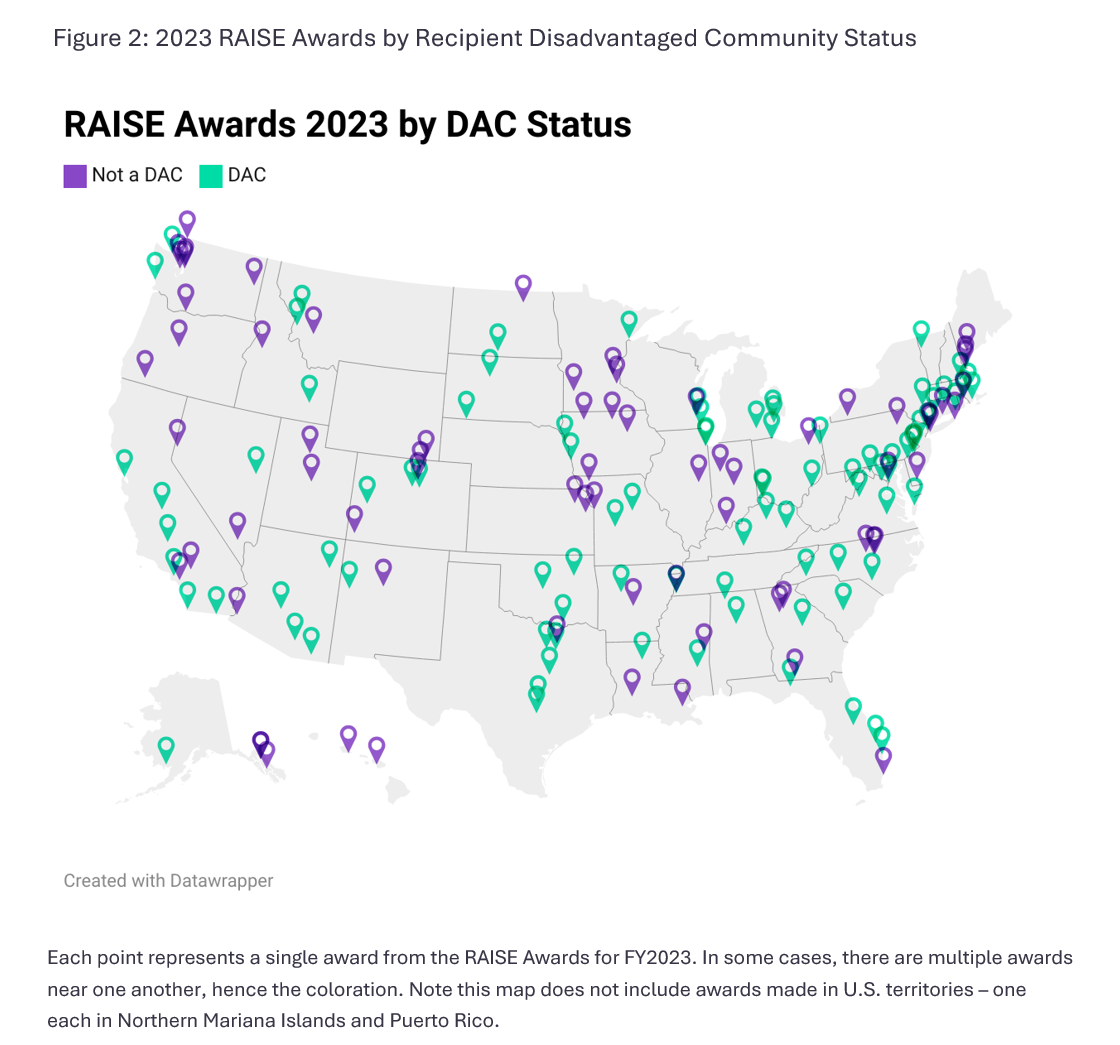
What about other key outcomes?
Complete Streets
Approximately $385.8 million across 28 projects included a mention of Complete Streets in 2023 (though less than 20 percent of all road funding awarded included a mention). Complete Streets are streets designed and operated to enable safe use and support mobility for all users and may include “sidewalks, bicycle lanes, bus lanes, public transportation stops, crossing opportunities, median islands, accessible pedestrian signals, curb extensions, modified vehicle travel lanes, streetscape, and landscape treatments.” Funding supported projects such as the Birmingham Civil Rights Crossroads: Reconnecting Historic Neighborhoods Through Active Mobility project. The DOT awarded $21.7 million to the City of Birmingham, Alabama to “redevelop approximately 2.5-miles of road with a complete streets approach, including a two-way cycle track, improved ADA access, sidewalks and other universal design elements.” Funding also supported the Downtown One-way to Two-way Street Conversions project. The City of Indianapolis received $25 million to “convert four pairs of one-way streets to two-way streets using a complete streets approach that includes the addition of a bike lane, multi-use paths, and sidewalk improvements.”
Electric Vehicle Charging
The DOT awarded approximately $187.7 million to 13 projects that mentioned electric vehicle (EV) charging or electrification. One of these projects is the 95th Street Terminal Electric Bus Improvements. The Chicago Transit Authority will oversee electrical upgrades and install up to six pantograph (overhead) chargers at the 95th Street Terminal for electric buses. Another example is the Railroad Corner Redevelopment, where the DOT awarded $22.8 million to the City of Orangeburg, South Carolina to “construct a pedestrian bridge over two state highways and a railroad, and a multimodal transit hub including a new public transit stop, charging infrastructure for electric vehicles and bicycles, and a public parking structure.”
Where did the funding go?
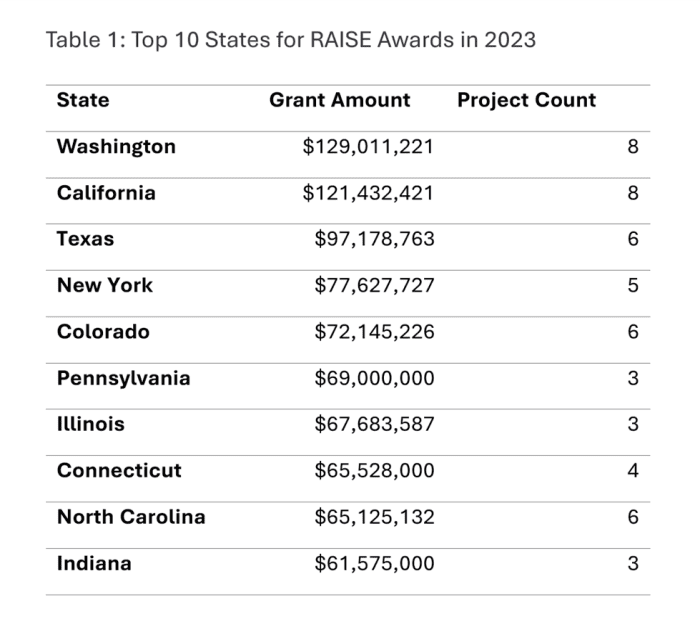
The largest funding by state went to Washington, California, and Texas (see Table 1). In 2023, the awards were split equally between urban and rural communities. Congress established a 50 percent cap in response to the Trump Administration directing 69 percent of the funds to rural areas in 2018. However, this rule has received criticism given the majority of Americans live in urban communities.
What is the Future of the RAISE Program?
The RAISE program has 40 percent of the total funding remaining or $3 billion. On July 18, 2023, House Republicans released a series of their FY 2024 spending bills which would functionally cut funding for a number of key infrastructure programs under IIJA. According to reporting by Tony Romm and Ian Duncan from the Washington Post, “that would equate to a roughly $800 million cut” from the RAISE program. Although this program received support from Republicans in the past (including 17 panel members who requested funds for dozens of local projects in 2022 and 2023) and was developed by a bipartisan group of Senators, Republicans are defending their proposed cuts as “a fiscally responsible way to reduce the burgeoning federal debt.” It is unclear how much of the RAISE funding will remain after negotiations.
Check out the Outcomes Dashboard for future RAISE awards and Opportunities Dashboard for future RAISE funding opportunities and announcements.
